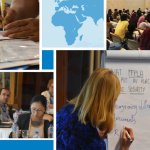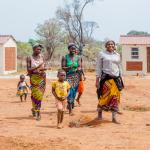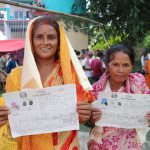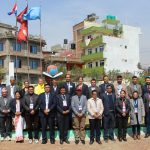Nepal
Nepal is a mountainous landlocked country with an area of 147,181 square kilometres and a population of approximately 27 million. Nepal went through a phase of political turmoil due to a decade-long armed conflict from 1996 which gave rise to the signing of Comprehensive Peace Agreement in 2007.
Nepal has history of conflict due to competition on ownership, tenure and use of land. Due to patriarchal social norms and feudal socio-economic and cultural structure of the Nepalese society, women and other vulnerable groups are deprived of equity and justice in land governance. Out of all civil cases in the Courts of law about half (47.5%) are related to land litigation, while many more end up without being reported or unheard.
Nepal faces land issues that are unique. Firstly, land tenure issues are explicitly recognized in the Nepalese Constitution and the Post Disaster Needs Assessment (PDNA). Besides upcoming restructuring of land governance with a review of more than 70 laws and regulations on land administration and management, the respective jurisdictions also have to be delegated into a local government level. Secondly, an assessment after the devastating aftermath of the two massive earthquakes of 25 April and 12 May 2015 showed that many land owners are not able to go back to their villages due to the high risk of settlements being on unsafe land. There is a high risk that these vulnerable groups are further pushed away into the disadvantaged positions and excluded from the benefits of the reconstruction program. Lastly, the government of Nepal has demonstrated the political will and commitment to address these challenges with the enactment of the law for Reconstruction of Earthquake Affected Infrastructures Act, 2015 and the establishment of a National Reconstruction Authority (NRA).
In Nepal, the Global Land Tool Network seeks to provide support in the development of the National Land Policy, specifically the implementation of the land components of the Constitution. For the Post-Earthquake Recovery, GLTN is supporting the improvement of earthquake recovery, resilience and tenure security for sustainable livelihoods in at least three affected villages in Dolakha district. This recovery support will be carried out within the VGGTs framework, GL TN values and objectives.
The key expected outputs from the GLTN interventions in Nepal are:
- Support for Land Policy Development – a comprehensive pro-poor land policy will help to expedite the recovery process, improve the sustainability of its outcomes, and contribute more broadly to implementation of certain land-related provisions in the new Constitution.
- Equitable and transparent earthquake recovery procedures – by supporting STDM implementation and the development of community mapping of their lands and validation procedures along the principles of Participatory Enumerations
- Capacity building for implementing teams and broader land sector in Nepal – to be cross-cutting to ensure proper comprehension of applicable concepts and capturing the innovations







